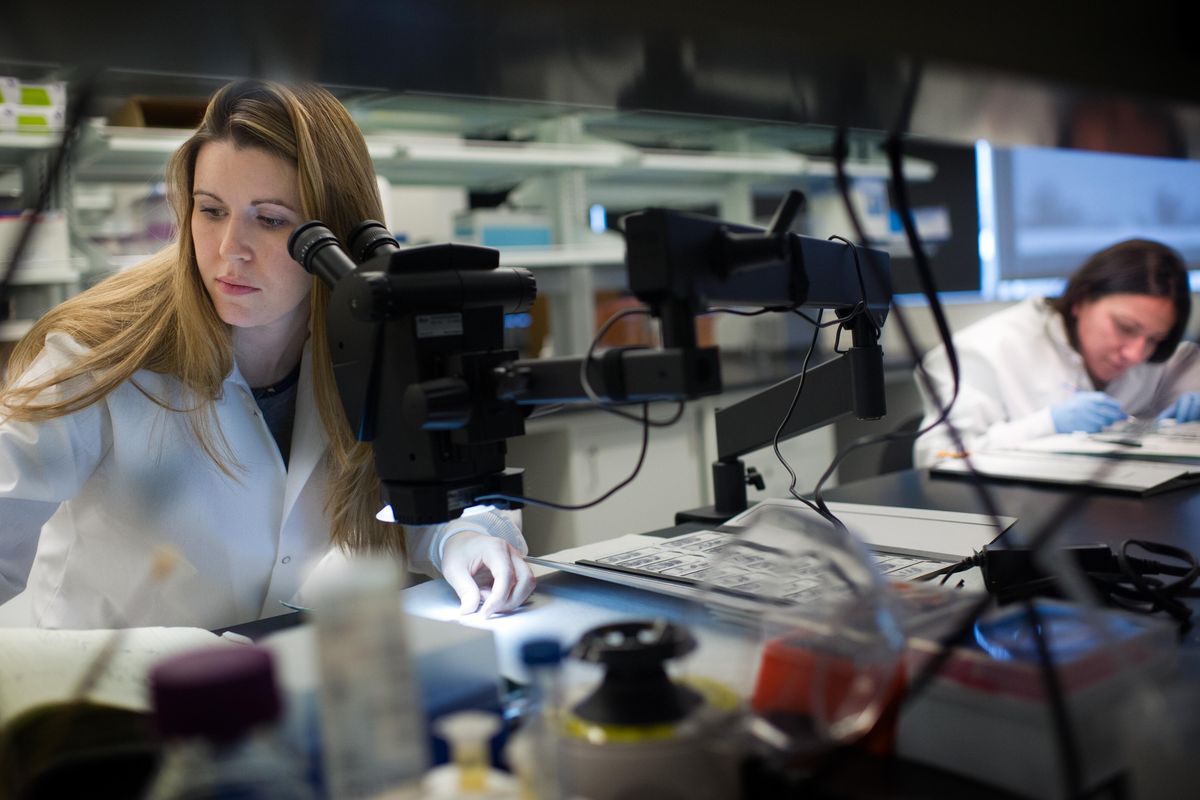Spokane-area economy is creating higher-wage jobs

Spokane initially lagged behind other West Coast cities in recovering from the Great Recession, but in the last few years, the local economy has produced a surge of higher-wage jobs.
More than 20,000 new jobs have been created in Spokane County since 2010. A majority of those jobs pay more than the average wage for the county, which is $21.17 per hour, or $44,035 per year.
The higher-wage job growth occurred across a broad array of industries, said Doug Tweedy, regional labor economist for the Washington Employment Security Department.
Construction companies and manufacturing firms are hiring. Professional jobs in science, research and technology are on the upswing.
Hospitals, dental offices and medical clinics are adding workers, and so are banks and credit unions.
Local colleges and universities also have become movers and shakers in the job market. They’re adding programs, constructing new buildings, and hiring faculty and staff.
“Spokane definitely started slower than the U.S. in the recovery, but it’s been a steady trend of continued improvement,” said Steve Scranton, chief investment officer and economist for Washington Trust Bank.
“It’s a pretty strong comeback,” added Grant Forsyth, chief economist for Avista Corp. “And most of it has occurred within the past 2 1/2 years.”
Local construction projects are one indicator of recent economic growth in Spokane, the economists say.
“What’s encouraging to me is that the construction activity is pretty broad-based,” Scranton said. “Just driving down Division, you can see the new commercial buildings that are going up. They’re not super-big buildings, but they’re reflective of the businesses that are coming to Spokane.”
Spokane is attracting some growth as a “second-tier” city, where people want to live and companies want to relocate for quality of life and lower housing costs, Scranton said.
New residents are creating demand for apartment buildings, which also fuels job growth in construction, he said. In addition, local governments are working on big public projects and local universities are spending tens of millions of dollars constructing and renovating buildings.
“Higher education’s role certainly stands out,” Forsyth, the Avista economist, said of the recent job growth. “The reach of education in both the public and the private sector is pretty substantial.”
In terms of direct hiring, the four local universities – Washington State University Spokane, Gonzaga, Whitworth and Eastern Washington – have added about 500 new employees since 2010, an increase of roughly 15 percent.
Many of those new hires show up as employment gains for the education sector, which also includes jobs in K-12 schools and training centers. Average wages in education are about $50,000 per year.
Some of the higher-ed jobs would also be classified as scientific, research or technical, where average wages are about $57,000 per year.
The universities’ focus on training health care professionals, including WSU’s new medical school, could pay significant dividends for future job growth, said Scranton, the Washington Trust Bank economist. Some of the faculty will be doing research, which could eventually produce spinoff companies.
“If Spokane becomes known as a great medical community, that on its own starts to attract more medical growth,” he said. “Spokane has that potential, though I wouldn’t say it’s clearly developing yet.”
More clear is the universities’ positive impact on the construction industry, Forsyth said.
“They’re big consumers of construction services,” he said.
WSU Spokane’s employment surge dates to 2013, when the College of Pharmacy moved here from Pullman to join the newly designated Health Sciences campus.
The WSU Spokane campus has added three new buildings to house its growing programs, including an $80 million Pharmaceutical and Biomedical Sciences Building.
Gonzaga has spent nearly $80 million on new buildings and major renovations since 2010. Three additional projects, valued at $66 million, are in the works.
Whitworth has spent $53 million on new construction projects, including the Robinson Science Hall, and two additional projects are in the planning stage. Eastern also has had several major projects, including a $30 million upgrade of the Pence Union Building that is currently underway.
Education and health care are already pillars of Spokane’s economy, Scranton said. He expects health care to continue to play an expanding role here, even with a potential repeal of the Affordable Care Act, which could shift how the medical industry provides care to low-income residents.
“I don’t think that changes demand for health care as a whole,” he said. “You still have an aging population. People are living longer, and they want to be healthy and have good quality of life.”